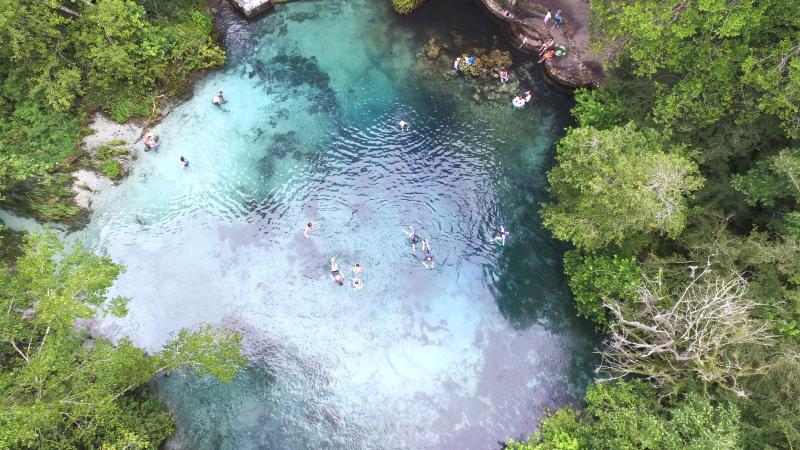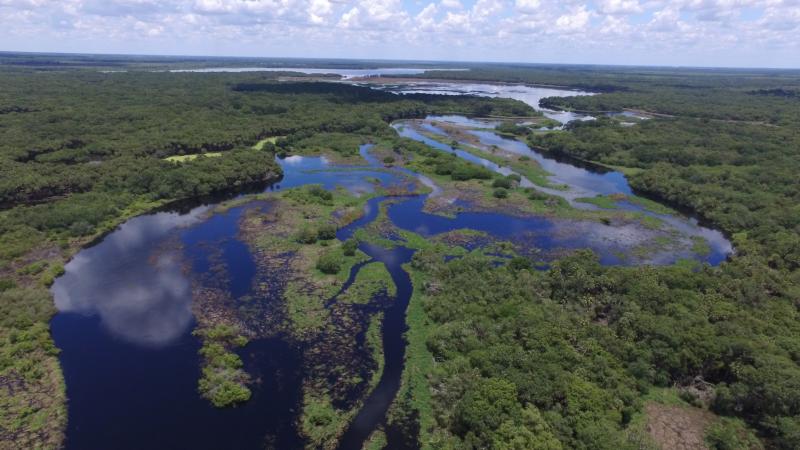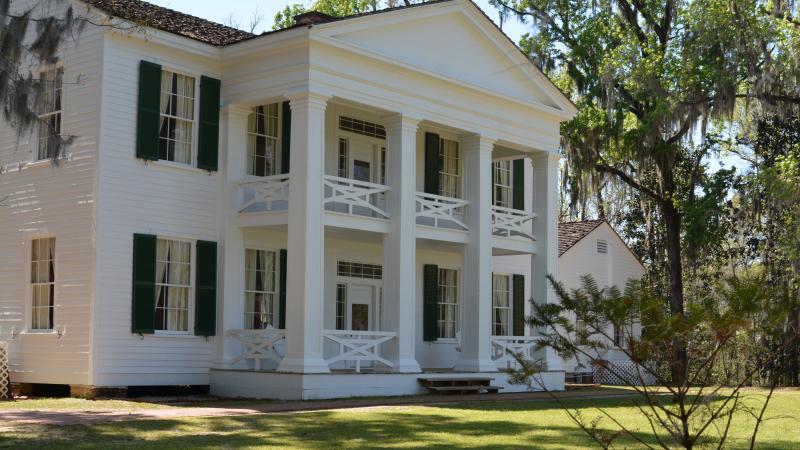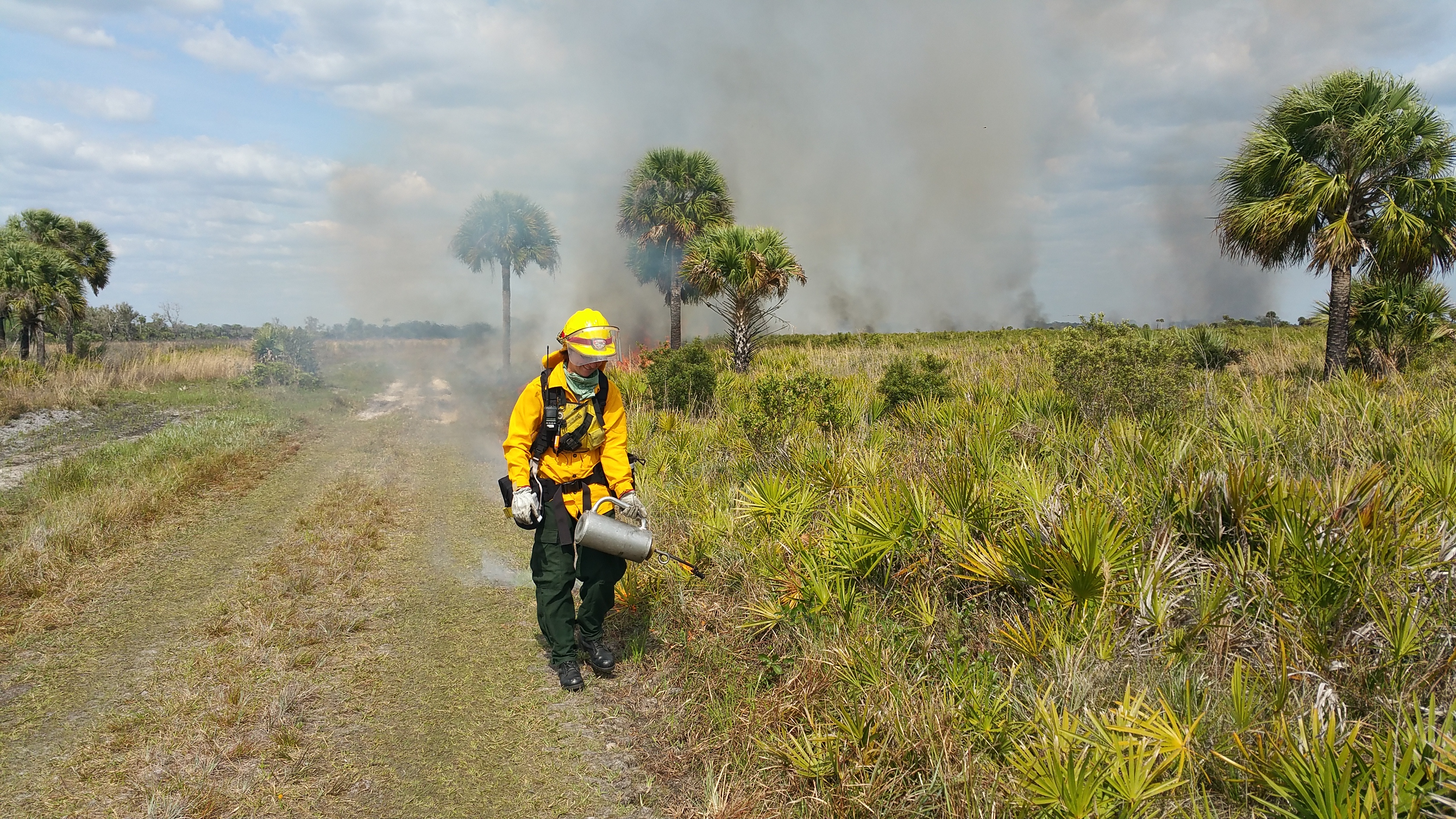
Myakka's Vast Dry Prairie
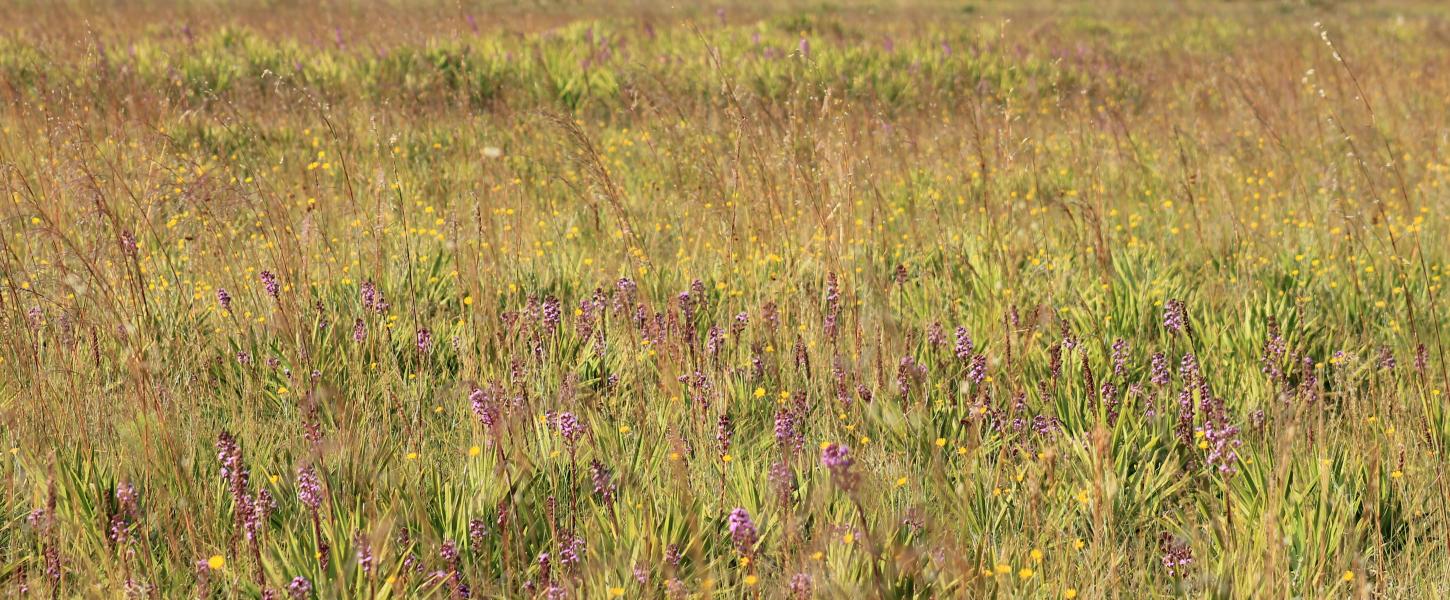
Life in the dry prairie can be harsh.
Due to poor drainage and underground soil stratifications, the dry prairie is seasonally either extremely wet or extremely dry. Relatively little time is spent in between, meaning that native wildlife must be adapted to being both drowned and in drought throughout the year.
Violent thunderstorms frequent the area, bringing intense lightning. Left to nature, the dry prairie burns approximately every two to three years. Plants and animals have adapted to these fires, thriving off the phoenix-like renewal of the prairie. To maintain the beneficial effects of these natural processes and reduce the incidences of wildfires, the Florida Park Service has replaced these natural, uncontrolled burns with carefully prescribed fires.

Stepping into the openness, you are surrounded with the second-most biodiverse ecosystem in North America. Most plants will not grow more than 3 feet tall, so you can see for miles around you!
Hawks frequently perch on the peripheries of the dry prairie for just this reason - to observe it. While saw palmetto, gallberry bush, and shiny or rusty lyonia dominate the landscape, a vast array of small species also finds their home in the dry prairie. Instead of a few, large plants dominating the landscape, fires ensure that a wide variety of bushes, grasses, vines and wildflowers have the space and sunlight to bloom.
